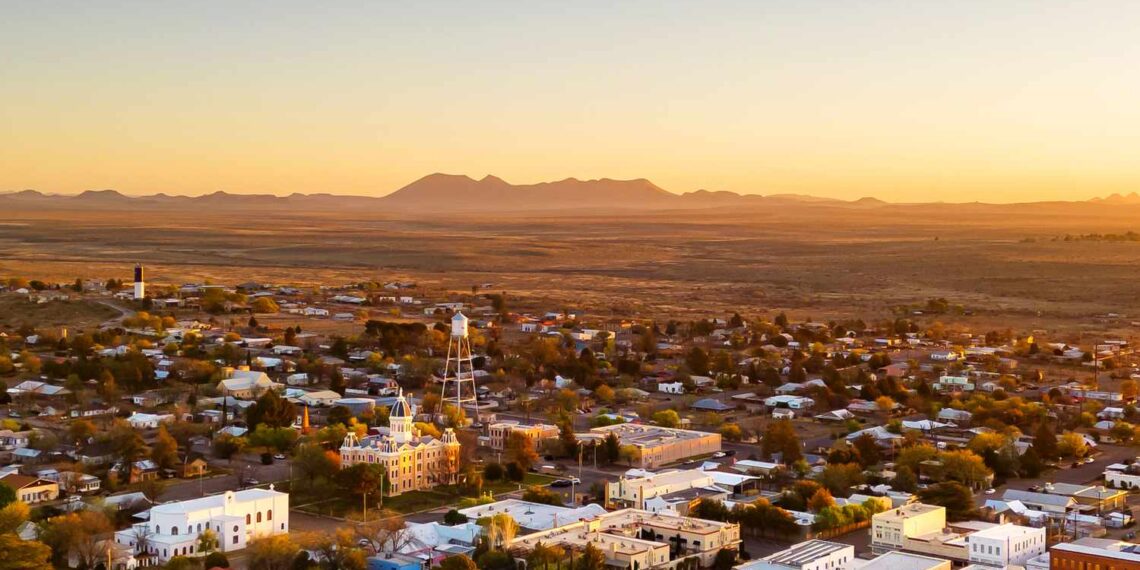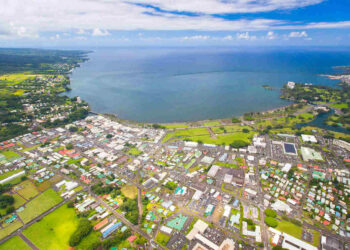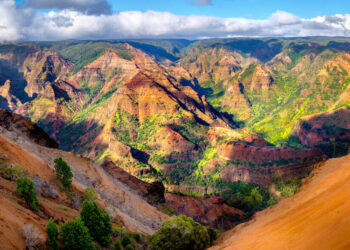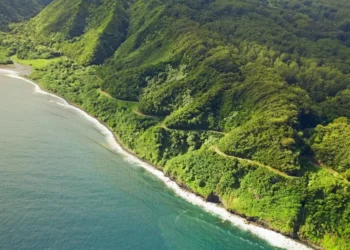Out in the vastness of West Texas, Marfa sits like a quiet riddle, a speck of a town where the desert stretches wide and the sky feels close enough to touch. It’s small—barely 1,700 souls call it home—but it carries a weight far beyond its size, a place where art and emptiness collide in ways that linger in the mind. Marfa has become known as a spot where New York’s art scene somehow took root in the dust, creating an unexpected intersection of culture and isolation.
Notable Insight: Marfa’s got a quirky claim to fame—back in 1971, a guy named James Dean (not the James Dean, mind you) tossed a rope around a pole from horseback during a local rodeo, blindfolded, in under ten seconds. It’s a tale that stuck, a little nod to the town’s knack for the unexpected.
Places to Visit: An Overview
Marfa’s treasures aren’t loud—they unfold slowly, like the desert itself. The Chinati Foundation is the heart of it all, a sprawl of old military buildings turned into a shrine for minimalist art. Donald Judd’s aluminum boxes, a hundred of them glinting in the sun, create a unique dialogue between space and silence. It’s not just art; it’s a conversation with the landscape. Ballroom Marfa, a smaller gallery, offers shifting exhibits—one visit might feature a sound installation, the next, experimental film.
Out beyond the town, Prada Marfa sits alone on Highway 90, a fake storefront with real Prada shoes and bags, locked forever behind glass. It’s an hour’s drive, but its absurdity has made it an icon—a mirage of luxury in the middle of nowhere. Back in town, the Marfa Lights Viewing Area draws visitors at dusk. Mysterious orbs flicker on the horizon—red, then white—dancing unpredictably. The Presidio County Courthouse, with its pink stucco and dome, offers a different kind of beauty, a piece of history that provides an unparalleled panoramic view of the town and desert beyond.
Each place feels like a thread in Marfa’s odd tapestry—art, mystery, and time all knotted together.
How to Reach
Marfa isn’t the kind of place stumbled upon—it takes some doing. The drive from Austin is a solid seven hours on Highway 90, a road that unfolds through scrub and sky. From Houston, it’s closer to nine hours. The nearest airports are in El Paso or Midland/Odessa, each about three hours away by car. Amtrak stops in Alpine, 26 miles away, with options to grab a ride into Marfa. Once in town, it’s small enough to explore on foot, though biking provides an easy way to cover more ground. Weekends bring crowds, so visiting on a weekday offers a quieter experience.
Frequently Asked Questions About Marfa’s Artistic Legacy
Marfa’s art scene sparks curiosity and discussion. Here are some common questions and their answers.
How’d art end up in a desert town like this?
It started with Donald Judd in the ’70s. He left New York, tired of its noise, and bought up old army land to create something permanent. The desert, with its vast emptiness, became the perfect backdrop for his minimalist ideas.
What’s the deal with the Chinati Foundation?
Judd’s brainchild, the Chinati Foundation transformed military barracks into galleries, featuring artists like Dan Flavin and his neon installations. It is designed to remain as Judd intended, making it more of a living experiment than a traditional museum.
Why’s Prada Marfa out there all alone?
Created in 2005 by artists Elmgreen and Dragset, Prada Marfa is a commentary on consumerism. It was never meant to be functional—just to sit there, slowly fading under the desert sun.
Does the art change the town?
Absolutely. With nearly 50,000 visitors a year, Marfa has shifted from a quiet ranching outpost into a contemporary art destination. While some locals grumble about the crowds, the economic boost is undeniable.
Digging In
Marfa has layers beyond its art. The Judd Foundation offers a glimpse into Donald Judd’s world—his home, books, and personal artifacts frozen in time. El Cosmico, a unique campground with trailers, yurts, and tents, provides an offbeat stay under the vast desert sky. The Marfa Book Company is a local gem, packed with carefully curated titles and art prints. Planet Marfa, a relaxed beer garden, and the Lost Horse Saloon, with its rough charm, add to the town’s character.
Practical Bits
Staying over? The Hotel Saint George is sleek and modern, offering views of the courthouse. The Paisano, a historic hotel with a Hollywood past, housed James Dean during the filming of Giant. For a budget-friendly stay, El Cosmico offers a more rustic, adventurous option.
Marfa’s food scene is small but distinct. Cochineal serves an unforgettable tasting menu, while Marfa Burrito is known for its hearty, no-fuss breakfast burritos. The Sentinel pours strong coffee and has a welcoming patio perfect for lingering.
Parting Glimpse
Marfa is a puzzle, a place where the desert holds tight to its secrets. Donald Judd came here to strip things down, but the town has since grown into something wilder—art spilling out, lights flickering, history layering itself like dust. Marfa’s stillness and vastness leave an impression, making it a place that lingers in the mind long after the road stretches out behind you.











